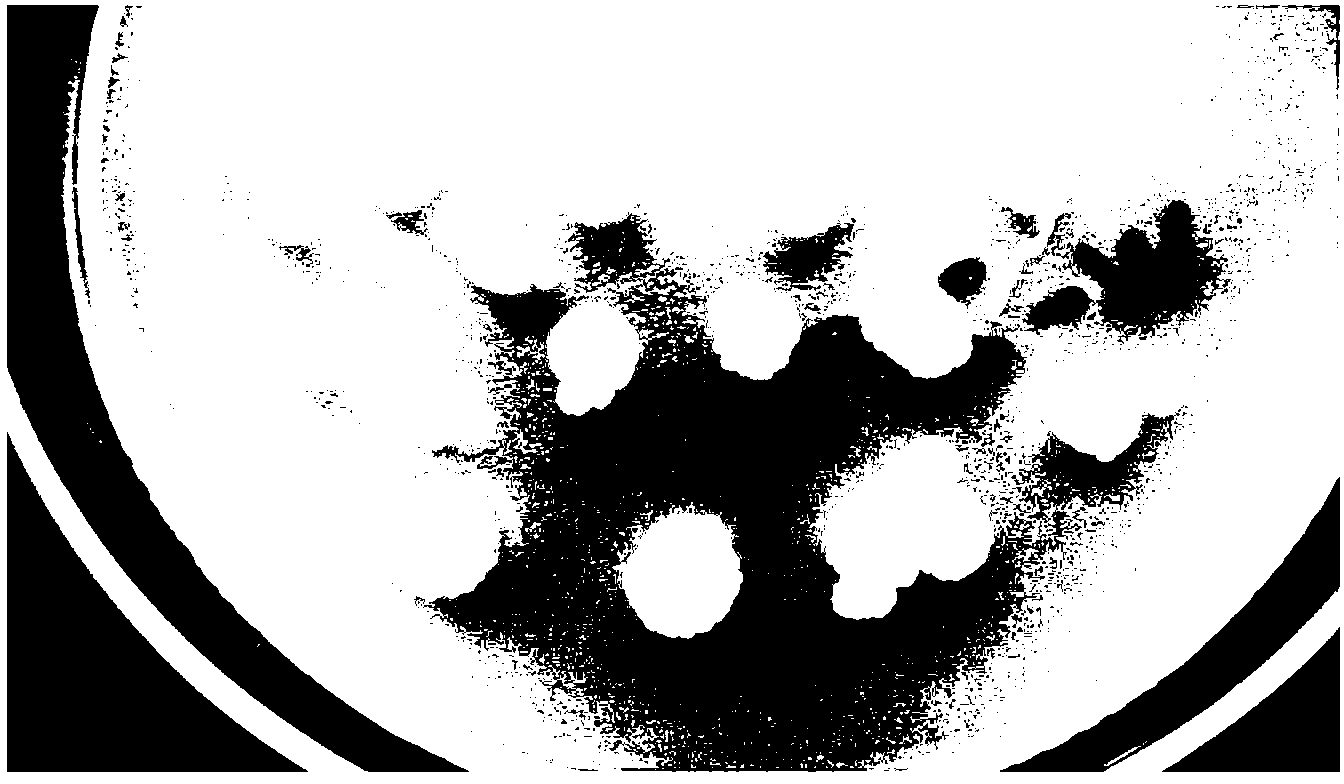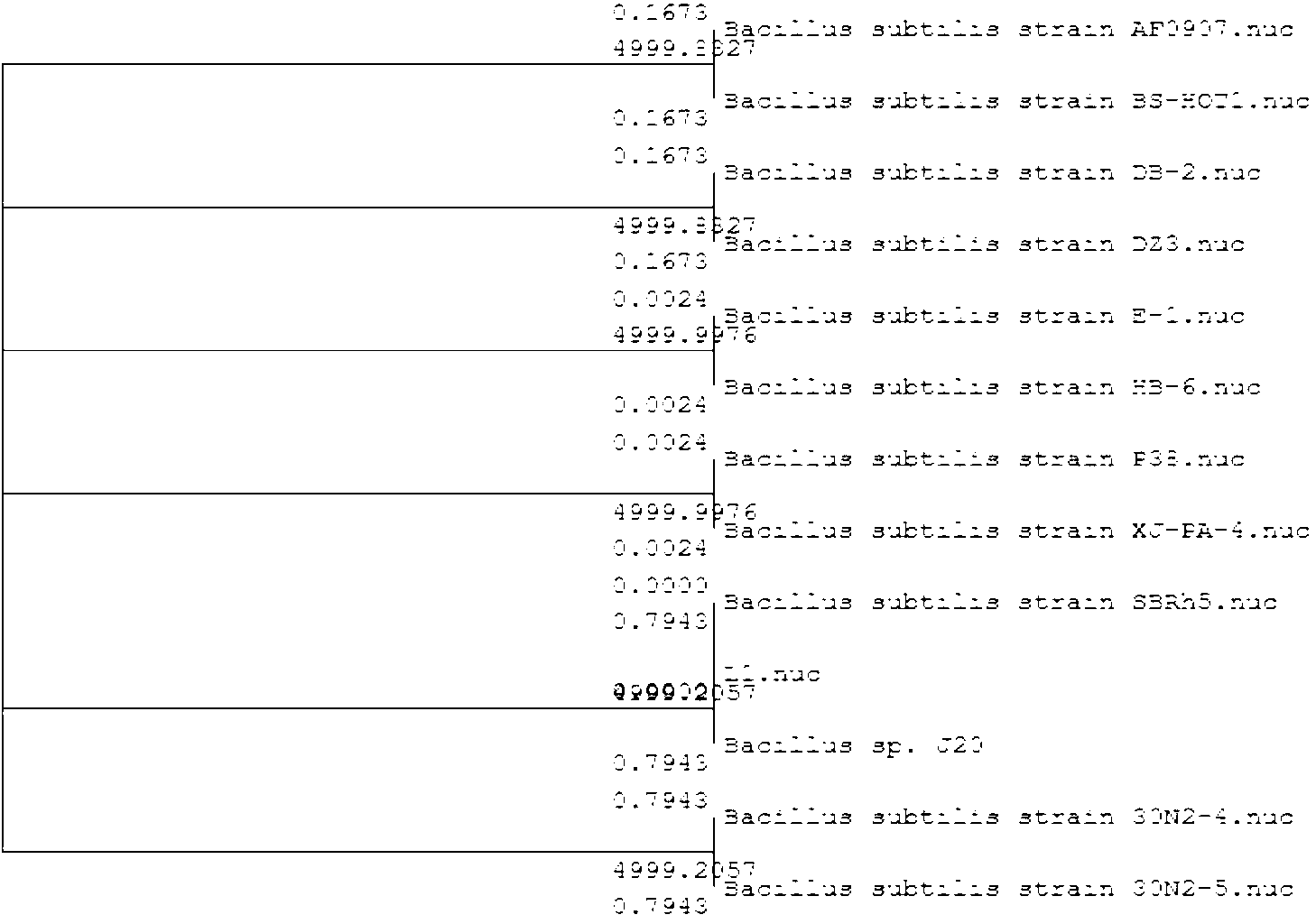Bacillus subtilis YB-04 and microorganism preparation thereof, and application of bacillus subtilis YB-04 in straw degradation
A Bacillus subtilis, YB-04 technology, applied in the field of microorganisms, can solve problems such as affecting the quality of sowing, emergence and growth of seedlings, the impact of the next crop, and slow decomposition of straw.
- Summary
- Abstract
- Description
- Claims
- Application Information
AI Technical Summary
Problems solved by technology
Method used
Image
Examples
Embodiment 1
[0022] Example 1 Isolation and screening of Bacillus subtilis YB-04
[0023] Sample collection: The samples were collected from rotting corn and wheat straw in several fields at the Yuanyang Base of Henan Academy of Agricultural Sciences (collection time: June 2010-October 2010; specific collection location: Yuanyang Base of Henan Academy of Agricultural Sciences, Collector: Xie Maofang), brought back in a fresh-keeping bag.
[0024] Isolation and purification of Bacillus subtilis: take the rotten straw collected, weigh 1g into a conical flask containing 100mL of sterile water, and shake fully on a constant temperature oscillator at 28°C for 2h. 10 by dilution coating plate method -1 -10 -7 The samples were spread on LB plates, cultured at 37°C for one day, and purified on LB plates according to the colony morphology. Place the culture medium upside down at 37°C for constant temperature cultivation overnight, and finally pick a single colony similar in shape, color, and siz...
Embodiment 2
[0028] Example 2 Identification of Bacillus subtilis YB-04
[0029] (1) Morphological and Physiological and Biochemical Taxonomic Identification The YB-04 strain was identified by colony morphology observation and microscopic observation, and its species was determined by searching the literature. Individual morphological characteristics, including Gram staining reaction, spore observation, cell size, etc.; group morphology observation, colony shape, colony surface characteristics, colony edge, colony color, and whether soluble pigments are secreted; physiological and biochemical tests. Peroxidase determination, V.P test, sugar fermentation test, starch hydrolysis test, gelatin liquefaction, citrate utilization, indole test, salt tolerance test, etc.
[0030] (2)Molecular identification: Genomic DNA extraction refers to the following steps: ① Cultivate 5 mL of bacterial culture to saturation, and centrifuge 1.2 mL of the culture at 12,000 rpm for 1 min. ② Add 500 μL of s...
Embodiment 3
[0038] Embodiment 3 YB-04 microbial inoculum preparation method
[0039] (1) Strain cultivation and preparation Inoculate Bacillus subtilis YB-04 on the slant medium of TSA test tube, and culture at 28-35°C for 24-36 hours to obtain the bacteria;
[0040] (2) Seed solution preparation: Introduce the test tube bacteria prepared in step (1) into TSB culture medium, and shake and culture at 28-32°C for 12-16 hours to make seed solution;
[0041] (3) Preparation of fermentation medium: Glucose, corn flour, soybean cake powder, and dipotassium hydrogen phosphate were added to water to prepare a culture solution containing 1.2% glucose, 1.8% corn flour, 3% soybean cake powder, and 0.2% dipotassium hydrogen phosphate;
[0042] (4) Liquid fermentation production After sterilizing the fermentation equipment and culture medium, inoculate the seed liquid into the culture liquid prepared in step (3) at an inoculation amount of 5%, at 27-34°C, at a speed of 180rpm, and at a pH of 8.0 Afte...
PUM
 Login to View More
Login to View More Abstract
Description
Claims
Application Information
 Login to View More
Login to View More - Generate Ideas
- Intellectual Property
- Life Sciences
- Materials
- Tech Scout
- Unparalleled Data Quality
- Higher Quality Content
- 60% Fewer Hallucinations
Browse by: Latest US Patents, China's latest patents, Technical Efficacy Thesaurus, Application Domain, Technology Topic, Popular Technical Reports.
© 2025 PatSnap. All rights reserved.Legal|Privacy policy|Modern Slavery Act Transparency Statement|Sitemap|About US| Contact US: help@patsnap.com



